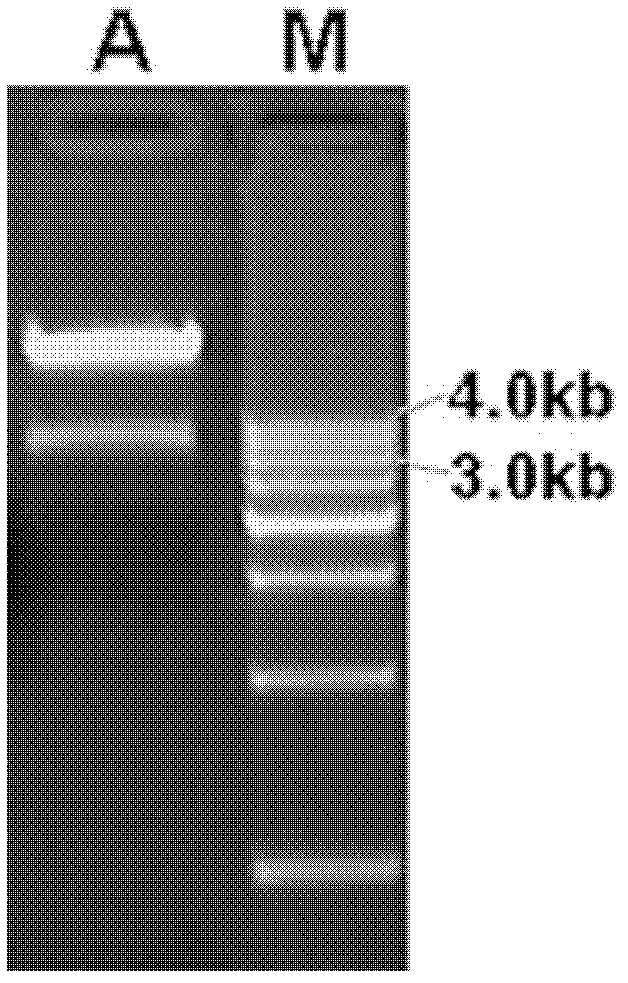Salt-tolerant gene CcSOS1 and application thereof
A salt-tolerant gene and genetic technology, applied in the fields of application, genetic engineering, plant genetic improvement, etc., can solve the problem that it is difficult to obtain excellent salt-tolerant varieties
- Summary
- Abstract
- Description
- Claims
- Application Information
AI Technical Summary
Problems solved by technology
Method used
Image
Examples
Embodiment 1
[0058] 1. Construction of plant expression vector pCAMBIA 1301-CcSOS1
[0059] The total RNA was extracted from the halophytic plant Chrysanthemum daisylum, and 1 μg of total RNA was reverse-transcribed into cDNA according to the M-MLV reverse transcription kit (TaKaRa), the cDNA product was digested with RNase, and primers were designed using the cDNA as a template A PCR reaction was carried out, and SalI and KpnI restriction sites were respectively introduced into the upstream and downstream of the CcSOS1 gene. The upstream primer was: CcSOS1-Sal-F: GGGTCGAC ATG GGA TCG GTG GCA AAC AAC GT (SEQ ID NO.2), and the downstream primer was CcSOS1-Kpn-R: GGGGTACC TTA GGG AGC TCG GGG GA (SEQ ID NO. 3). 50 μL reaction system: 5.0 μL 10×PCR Buffer, 1.0 μL (20 μmol L-1) each of CcSOS1-Sal-F and CcSOS1-Kpn-R primers, 4.0 μL (2.5 mmol L-1) of dNTP mix, PrimeSTARTM HS DNA Polymerase 0.2 μL, cDNA template 1 μL, ddH 2 O 37.8 μL; reaction program: pre-denaturation at 95°C for 4 min, then me...
PUM
 Login to View More
Login to View More Abstract
Description
Claims
Application Information
 Login to View More
Login to View More - R&D
- Intellectual Property
- Life Sciences
- Materials
- Tech Scout
- Unparalleled Data Quality
- Higher Quality Content
- 60% Fewer Hallucinations
Browse by: Latest US Patents, China's latest patents, Technical Efficacy Thesaurus, Application Domain, Technology Topic, Popular Technical Reports.
© 2025 PatSnap. All rights reserved.Legal|Privacy policy|Modern Slavery Act Transparency Statement|Sitemap|About US| Contact US: help@patsnap.com



